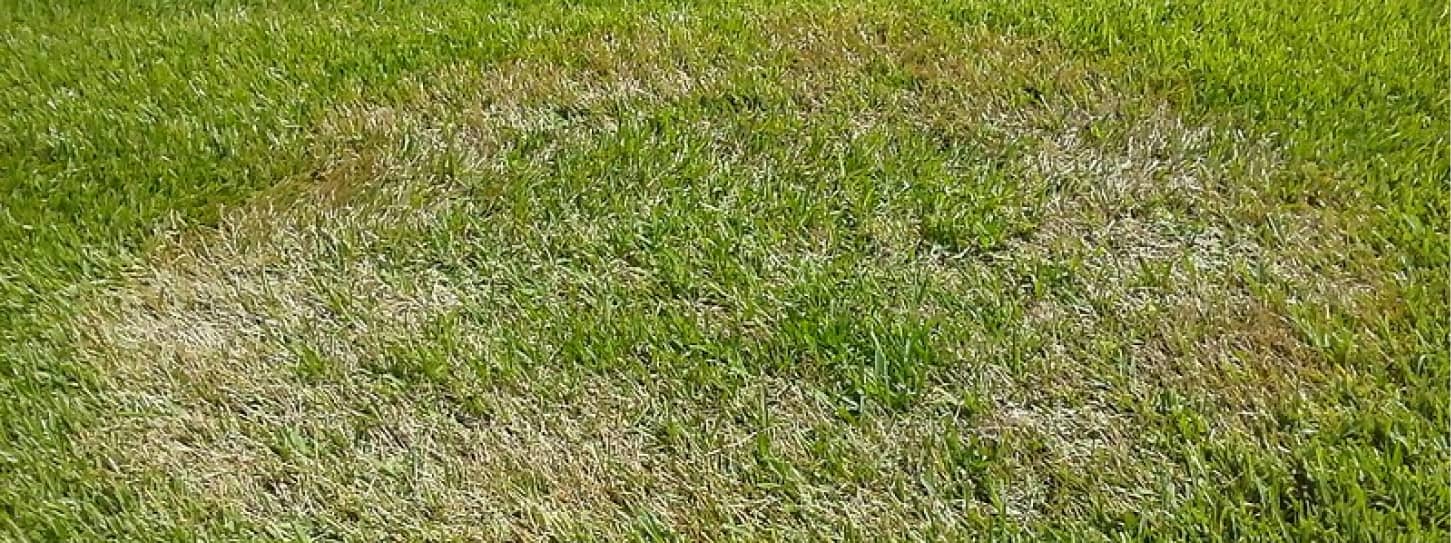Has your yard developed weird yellow spots? Does it look dry and limp, yet you’ve been watering regularly (or at least it’s been raining regularly)? It is quite possible your lawn has fallen victim to Brown Patch fungus disease, a fescue killer! May through August is prime time for this turf-destroying disease as it breeds in the hot, humid evenings of summer. In this brief article, we’ll explain how to identify Brown Patch fungus, how to avoid it, and what to do if your lawn is infected.
Identifying Brown Patch Fungus
Brown Patch disease usually occurs midsummer during an extended period of hot humid weather. Initially, the turf develops purple-green patches similar to that of drought stress. The damaged turf quickly fades to a light tan or brown, usually creating circular patches that range in size from a few inches to several feet in diameter. Newer tall fescue varieties tend to have blighted patches without the formation of distinct circular patches. Overall, the lawn will appear wilted as if it experienced drought stress even though enough moisture is present.
Taking a close look at the individual blades will further help in identifying the presence of Brown Patch fungus. The fungus initially attacks the blades of grass, causing the formation of irregular, water-soaked spots with a dark brown border. As the disease progresses, the fungus attacks the plant crown and kills the plant. Brown Patch development can be rapid, creating large blighted patches within a 24-48 hour period. When the hot, humid weather persists, the fescue may be killed.
Preventing Brown Patch Fungus
Since temperature control is probably out of your realm of ability, moisture control is the key to prevention. Your lawn still needs plenty of moisture during hot summer days, so it’s all about the timing. Early morning watering is best, ideally sometime between 1 AM and 9 AM. This is the time that the grass would be wet from dew anyway. Mid-day watering can lead to turf burn (kind of like a sunburn on your lawn) as well as quick evaporation. Evening watering is the biggest contributor to turf fungi, as it extends the amount of time the blades remain moist. Avoid evening watering!
Treating Brown Patch Fungus
If you recognize signs of Brown Patch in your lawn, take action quickly. Call Southern Exposure and request a fungicide application. Brown Patch fungus continues to spread until a fungicide application is applied. Typically, treatment requires three applications about 21 days apart. In a light attack, the turf will recover in two to three weeks. Unfortunately, if the fungus has killed the crown of the plant, the fungicide cannot reverse the damage, but it will prevent the spread. New seed or an aeration in the fall will help fill in the spots with new turfgrass. The fungicide is only effective for approximately three weeks so applying fungicide as a preventative measure does not guarantee that it will prevent Brown Patch as the timing may be off. Financially, the best practice is to wait until you see signs of Brown Patch before determining if you need a fungicide application. If you have further questions or think you may have Brown Patch in your yard, give us a call – (336) 451-4969. We’re happy to help!
